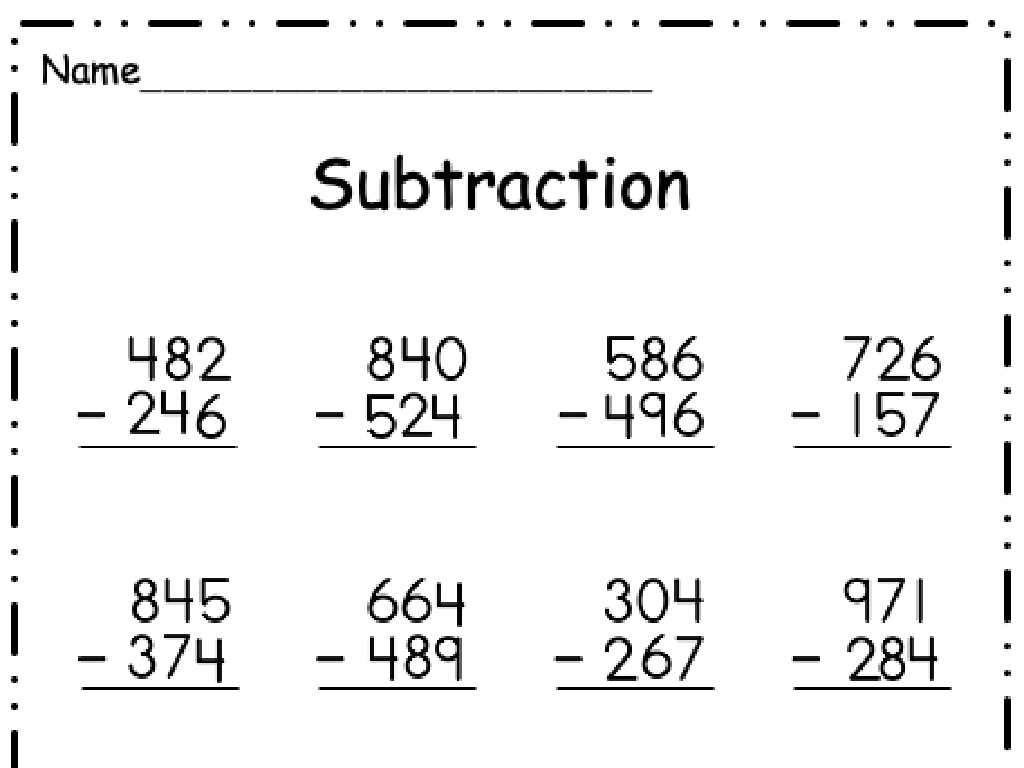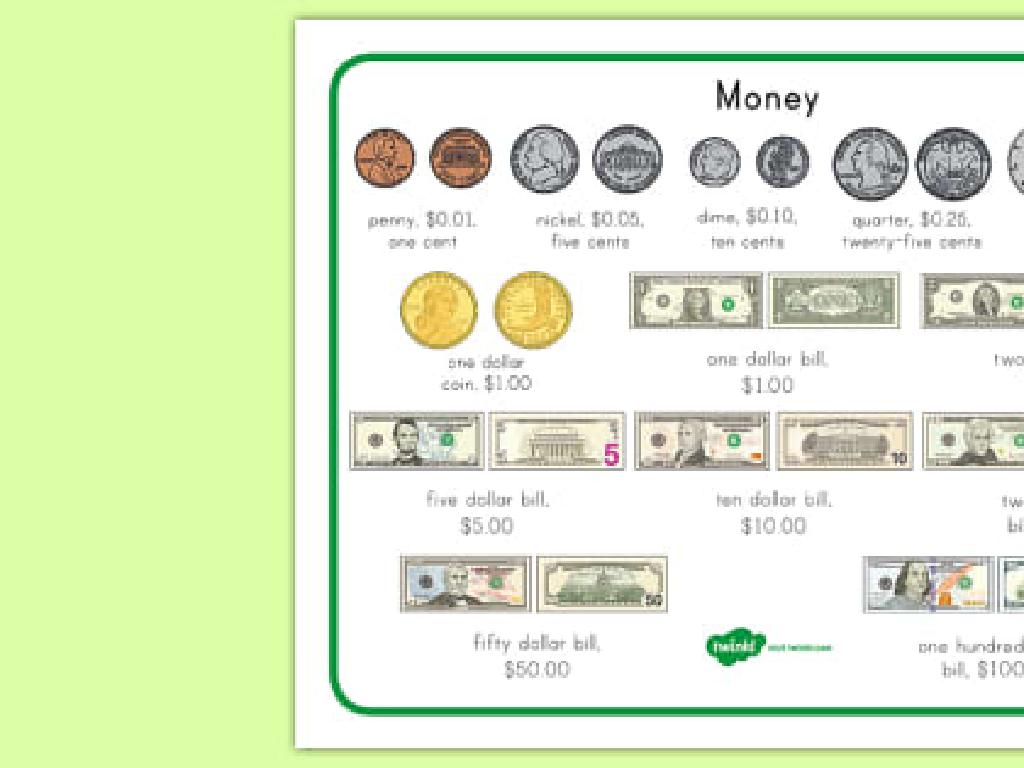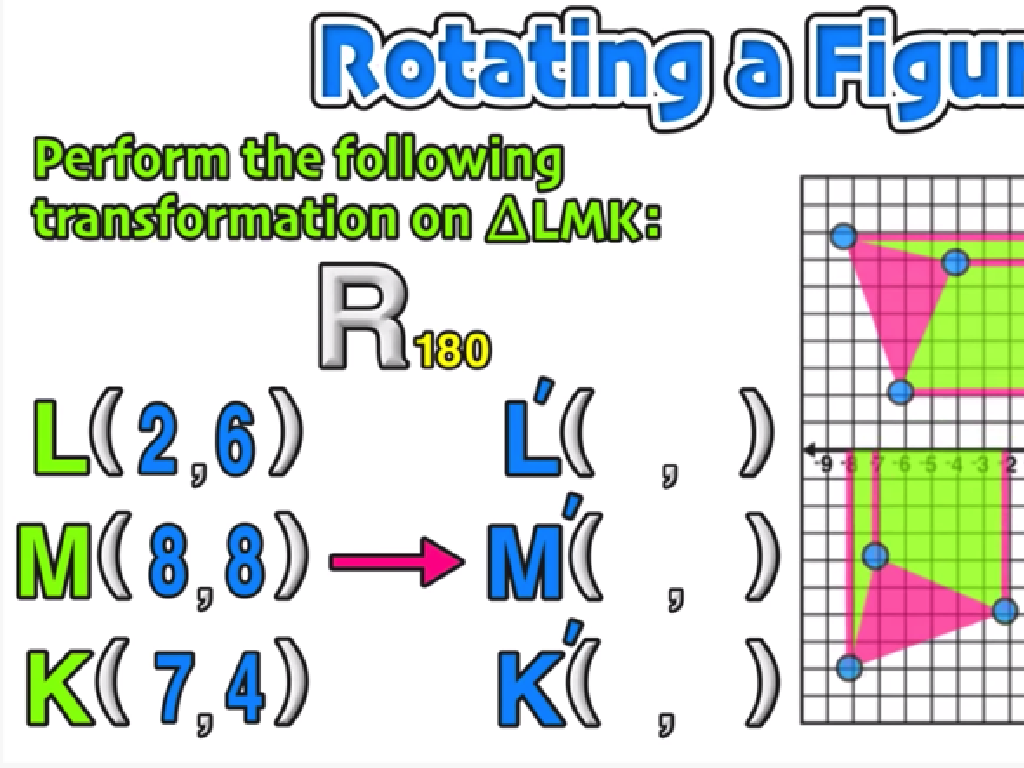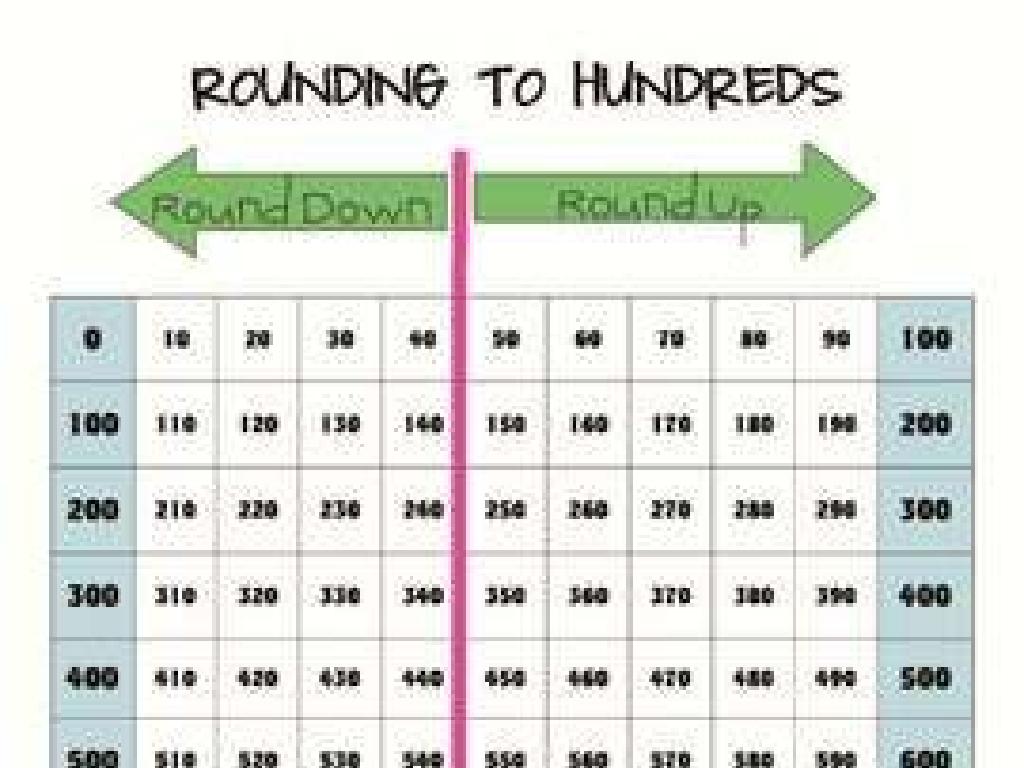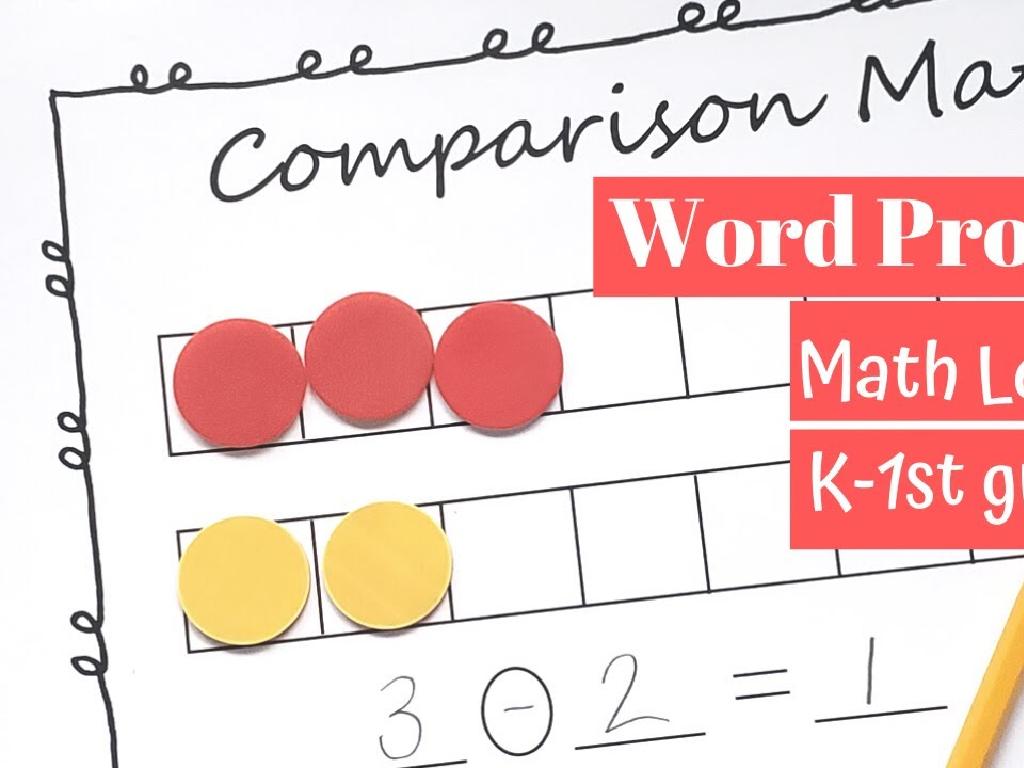Choose The Best Transition
Subject: Language arts
Grade: Fourth grade
Topic: Linking Words
Please LOG IN to download the presentation. Access is available to registered users only.
View More Content
Linking Words: Connecting Ideas
– What are linking words?
– Words that connect parts of a sentence
– Importance in writing
– They make writing flow smoothly
– Examples: ‘and’, ‘but’, ‘because’
– ‘and’ adds, ‘but’ contrasts, ‘because’ gives reason
– Practice using linking words
|
This slide introduces the concept of linking words, which are essential tools in writing that help connect sentences and ideas. Explain that linking words are like bridges between thoughts, making our writing more coherent and easier to understand. Emphasize their importance by showing how disjointed and confusing sentences can be without them. Provide clear examples with ‘and’, ‘but’, and ‘because’, and demonstrate how each serves a different purpose in a sentence. Finally, engage the students with a practice activity where they create their own sentences using these linking words to reinforce their understanding.
Choosing the Best Transition: Linking Words
– Conjunctions connect sentences
– ‘and’, ‘but’, ‘or’ link ideas in a sentence
– Adverbs modify actions
– ‘however’, ‘therefore’ show cause or contrast
– Prepositions show relationships
– ‘in’, ‘on’, ‘between’ tell us position or time
– Practice using transitions
|
This slide introduces students to the concept of linking words, which are essential for creating smooth transitions between ideas in writing. Conjunctions are used to connect words, phrases, or clauses. Adverbs can modify verbs, adjectives, or other adverbs, often showing the relationship between sentences or parts of a sentence. Prepositions are used to show the relationship of a noun or pronoun to another word in the sentence, often indicating time, place, or position. Encourage students to practice using these linking words in sentences to enhance their writing coherence and cohesion. Provide examples and create simple exercises where students can fill in sentences with appropriate linking words.
Choosing the Best Transition
– Deciding on linking words
– Think: What word connects these ideas best?
– Relationship between ideas
– Are the ideas similar, contrasting, or cause-and-effect?
– Using context for transitions
– Read sentences before and after the word to decide
|
When choosing the best transition word, it’s important to consider the relationship between the ideas you’re linking. Are they complementary, or are they opposing points? Understanding this will guide the selection of the appropriate transition word. Encourage students to use context clues by reading the sentences around the gap where the transition word is needed. This will help them understand the flow of the text and choose a word that best maintains that flow. Provide examples of different types of relationships (e.g., addition, contrast, cause, and effect) and corresponding transition words. Practice with sentences where students have to fill in the blanks with suitable transitions.
Choosing the Best Transition
– Sentence without transition
– ‘I was hungry. I ate a sandwich.’
– Sentence with transition
– ‘I was hungry, so I ate a sandwich.’
– How transitions connect ideas
– Transitions like ‘so’ help sentences flow better.
– Practice creating smooth sentences
|
This slide is aimed at teaching students the importance of using transition words to link ideas together in sentences, making them smoother and easier to understand. Start by showing the example without a transition and then the example with the transition. Discuss how ‘so’ acts as a bridge between the two thoughts, showing cause and effect. Emphasize that transitions help make writing more coherent and clear. Encourage students to think of other transition words they could use in the example and come up with their own sentences to share with the class.
Activity: Crafting Sentences with Linking Words
– Write sentences using linking words
– Be creative and use new words
– Share your sentences with the class
– Read your sentences aloud or on the board
– Discuss the use of linking words
– Talk about how linking words connect ideas
|
This activity is designed to help students practice using linking words to connect ideas in sentences, which enhances their writing skills. Encourage students to be creative and challenge them to incorporate new vocabulary they’ve learned. After writing, students will share their sentences with the class, providing an opportunity for public speaking and peer learning. During the discussion, focus on how the linking words improve the flow of ideas and clarify relationships between concepts. Offer examples of linking words like ‘and’, ‘but’, ‘because’, ‘so’, and ‘then’. Prepare to guide the discussion with questions like ‘How does the linking word change the meaning of the sentence?’ or ‘Can you think of another linking word that would work well in that sentence?’
Class Activity: Linking Word Challenge
– Form small groups for activity
– Distribute sentence strips to groups
– Select transitions to link ideas
– Look for words like ‘and’, ‘but’, ‘so’ to connect sentences
– Collaborate and discuss choices
– Share why you chose each transition
|
This activity is designed to help students understand the use of transition words in connecting ideas within their writing. By working in small groups, students can collaborate to find the most appropriate linking words. Provide each group with sentence strips that they will use to practice this skill. Encourage them to discuss why certain transitions work better than others in different contexts. As a teacher, walk around to facilitate and guide the groups as needed. After the activity, bring the class together and have a few groups share their sentences and chosen transitions to reinforce learning through peer examples.
Conclusion: Mastering Transitions in Writing
– Why linking words matter
– Linking words connect ideas and show relationships.
– Tips to pick the right transition
– Think about how your ideas relate, then choose a word that shows that relationship.
– Homework: Craft a story with transitions
– Write a short story and use different transitions to show the flow of your ideas.
|
As we wrap up our lesson on transitions, it’s crucial for students to understand that linking words are the bridges between thoughts and ideas in their writing. They make the text flow smoothly and help the reader follow the writer’s train of thought. Reiterate the strategies for choosing the best transition by considering the relationship between the ideas they want to connect. For homework, students will apply what they’ve learned by writing a short story that incorporates a variety of transition words. This will help reinforce their understanding and give them practical writing experience. In the next class, we can have a few students share their stories to celebrate their use of transitions.

